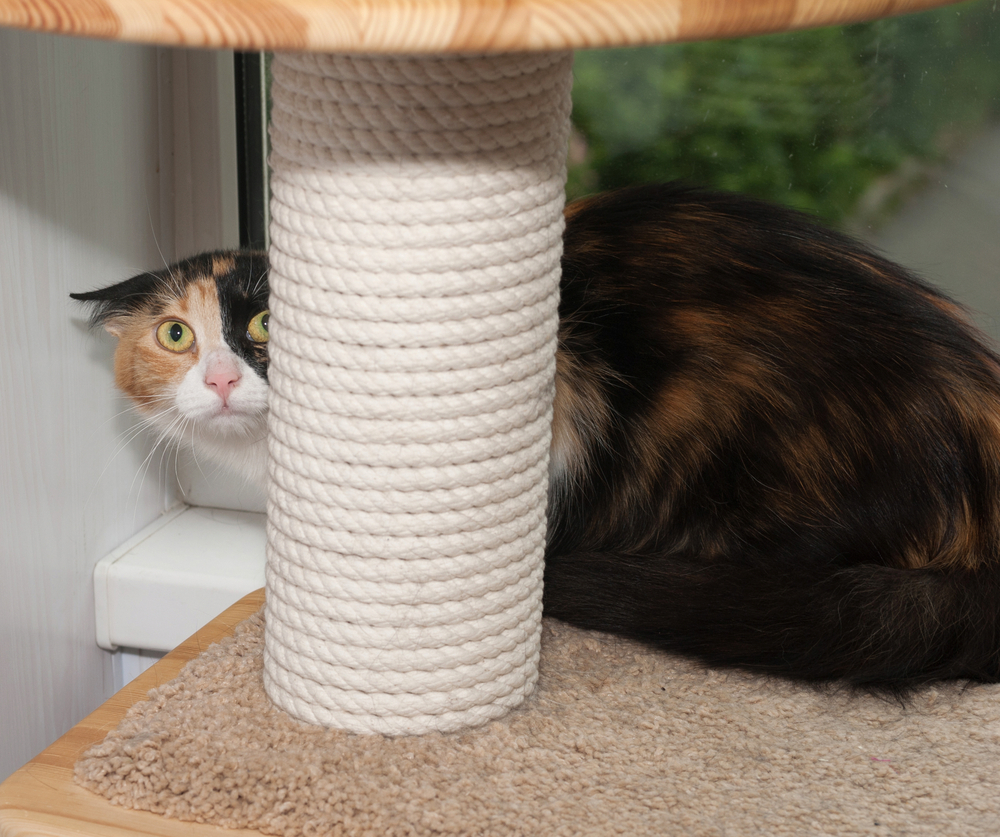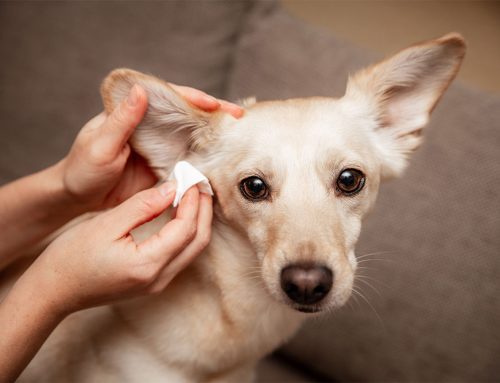Many pets react fearfully to noises, and if the problem isn’t properly addressed, serious consequences can occur. To help improve your pet’s quality of life, our Oliver Animal Hospital south Austin veterinarians answer your frequently asked questions (FAQs) about noise aversion, so you can help your pet receive the treatment they need.
Question: How prevalent is noise aversion in pets?
Answer: According to a 2018 Harris Poll, noise anxieties (i.e., phobias) affect 67% of dogs in the United States. The condition is also common in cats.
Q: What triggers a pet’s noise aversion?
A: Any unexpected loud sound can trigger a pet’s noise aversion. Common noise-aversion culprits include:
- Fireworks
- Thunderstorms
- Construction
- Sirens
- Traffic
- Vacuum cleaners
- Kitchen appliances
- Lawnmowers and other noisy yard equipment
- Smoke detectors
- Crowds
Q: What causes noise aversion in pets?
A: In many cases, the condition’s inciting cause cannot be determined. However, several factors can predispose a pet to noise aversion, including:
- Improper socialization — When pets are young, preferably starting at the age of 3 weeks, they should be exposed to a variety of sights, sounds, and experiences to help them learn how to acclimate to new situations in their environment. If this doesn’t occur or the process causes a pet to have a negative experience, they can become predisposed to noise aversion.
- Breed — Certain dogs, including working and pointer breeds, are predisposed to noise aversion.
- Traumatic experience — A pet who experienced a trauma, such as being hit by a car or falling from a great height, may negatively associate a sound that occurred during the incident, leading to a noise aversion.
- Exposure — A pet who observes a noise-averse pet’s negative reaction may imitate the behavior, developing a noise aversion in response.
- Cognitive dysfunction — As pets age, they can experience cognitive decline, which can predispose them to noise aversion.
- Pain — Pets affected by spinal or arthritis pain may negatively associate a noise with a pain episode, leading to a noise aversion.
Q: What are the consequences for noise-averse pets?
A: Many owners dismiss their pet’s noise-fear response. However, the condition can lead to several concerning repercussions, including:
- Psychologic distress — When a pet’s noise aversion is triggered, they experience severe psychologic distress that can continue for hours or days after the sound has frightened them.
- Physical harm — Noise-averse pets can exhibit frantic behavior that may lead to injury. Many affected pets also attempt to escape, which can lead to dire consequences if they run into traffic or become lost.
- Health concerns — The stress from a noise aversion can lead to health issues such as dermatologic conditions and urinary tract disorders.
- Inappropriate elimination — Many noise-averse pets urinate, defecate, and express their anal glands when triggered.
- Destructive behavior — In an attempt to escape, a noise-averse pet may damage your household items and personal belongings, such as your favorite pair of shoes.
- Aggression — Some noise-averse pets exhibit aggressive behavior toward people or other pets.
Q: How can I tell if my pet has a noise aversion?
A: Some pets exhibit obvious behaviors that indicate they are afraid when their triggering noise occurs. However, other pets may exhibit more subtle signs, such as:
- Lip licking
- Excessive panting
- Lifting a front limb
- Cowering
- Shivering
- Hiding
- Pacing
- Whining, barking, or meowing
- Urinating or defecating inappropriately
- Expressing anal glands
- Attempting escape
- Exhibiting uncharacteristic aggression
Q: How should I react if my pet has a noise aversion?
A: Remain calm and gently comfort your pet. Never scold your pet for exhibiting a noise-averse reaction, because doing so can increase their anxiety, worsening the problem. In addition, don’t dramatize the situation, because you may make your pet think they have a good reason to be upset.
Q: Can environmental modifications help my noise-averse pet?
A: In some cases, environmental modifications can help mitigate your pet’s noise aversion. Follow these tips:
- Provide your pet with a quiet area — If a noise-triggering event is occurring, take your pet to the quietest area in your home. This can be a closet, an interior room, or windowless basement.
- Mask the noise — Play music, a quiet television show, or white noise to help mask sounds your pet finds scary.
- Distract your pet — Play with your pet or provide a food puzzle toy to help distract them from the upsetting noise.
Q: Can calming garments help my noise-averse pet?
A: Calming garments are available that may be beneficial to some noise-averse pets, especially those who react to thunderstorms and fireworks. Calming garment options include:
- Ear muffs — Noise-canceling ear muffs can help muffle the upsetting noise.
- Close fitted vest — These vests work similarly to swaddling a baby and can help calm a pet’s fight-or-flight response.
Q: Can behavior modification help my noise-averse pet?
A: Techniques, including desensitization and counterconditioning, can benefit some noise-averse pets. However, these methods take weeks to months to become effective. Follow these behavior modification tips:
- Locating a noise-triggering soundtrack — Find a soundtrack of your pet’s noise trigger.
- Playing the track at the right volume — Play the track at a low volume that doesn’t trigger your pet.
- Creating a positive association — Feed your pet or play their favorite game while playing the track at the nontriggering volume.
- Increasing the volume — During each behavior modification training session, gradually increase the soundtrack’s volume to help desensitize your pet to the noise.
- Lowering the volume — If your pet reacts anxiously when you raise the volume to the next level, immediately lower the volume to a safe level. Increase the volume at a smaller increment during the next behavior modification training session.
- Practicing patience — Continue this process until your pet is comfortable when the noise-triggering soundtrack is played at full volume.
Q: Can pharmaceuticals help my noise-averse pet?

A: Some pets benefit from pheromones and calming supplements. However, medications, including sedatives and anti-anxiety medications, are often necessary to treat severe cases.
Many pets react fearfully to noises, and if the problem isn’t properly addressed, serious consequences can occur. If certain noises cause your pet to become anxious, contact our Oliver Animal Hospital south Austin veterinarians, so we can determine the best way to address your dog’s or cat’s problem, and calm their fears.








Leave A Comment